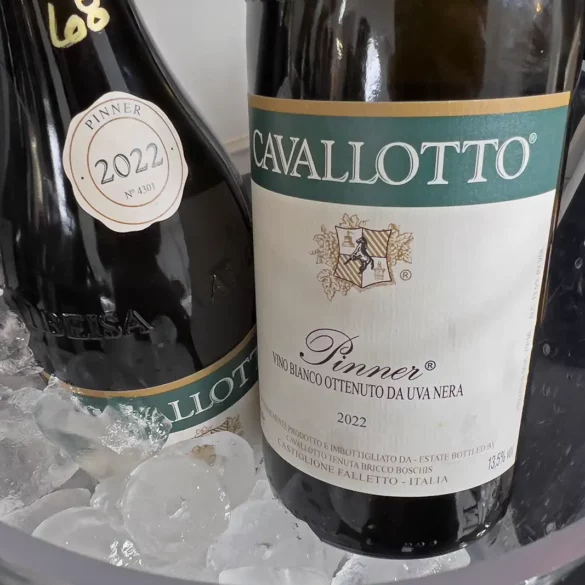It is not often that I source a wine for this column from a trade tasting. These are crowded affairs, the pours are tiny, and finding the space and dexterity to type out notes on a mobile phone turns the exercise into the polar opposite of real wine drinking. But this week, a wine was so startling perfect, I broke protocol and asked for a second pour so I could make proper notes: Cavallotto’s underrated, surprising, fantastically complex 2022 vino bianco called “Pinner.”
The Barolo DOCG is already an all-star team, but Cavallotto would certainly be in the starting lineup of most connoisseur’s lineup card.
If you are not familiar with Cavallotto, it’s time to rectify that. Not only is this one of the most historic and continuously operating families in Barolo, but present winemaker, Alfio Cavallotto, is among the region’s most talented. The Barolo DOCG is already an all-star team, but Cavallotto would certainly be in the starting lineup of most connoisseur’s lineup card.
While their microplot Barolo wines from the Bricco Boschis cru fetch well north of the $150 mark, the estate has a wealth of wines to choose from for the more budget inclined, including a “baby Barolo” Langhe Nebbiolo and an exquisite Barbera d’Alba Superiore to savor. These wines are more than their contemporaries, but you notice the quality immediately. They’re worth the premium.
However, “Pinner” might be the most compelling non-Barolo wine happening at the celebrated estate. And I never even knew about it until this week, when Denver-based importer Giuliana Imports offered a taste at their Piedmont portfolio tasting.
So what does this wine have going for it? For one, it is a blanc de Pinot Noir made from a specialized Champagne clone that was planted in the tiny Barolo cru of Vignolo in 1972. Of course, in 1972 this wasn’t such an outlandish idea. Certainly the calcareous marl soils of Castiglione Falleto would foster the right texture for a traditional-method sparkling wine, and Nebbiolo fever had yet to sweep the wine world as it has over the last 10 years. When the Cavallotto family took over the plot in the late 1980s, they didn’t move to replant, and eventually came to see the value in producing a white wine from the grapes to diversify their all-red portfolio.
Now be honest, which would you rather have: another Arneis or a blanc de Pinot Noir?
This wine was served ice cold, and yet its fiercely tropical and stone fruit aromas broke through on the nose with immediate effect, as did a nice edginess that recalled fresh sage leaves. It was this last note that made me feel a kinship between this French grape and the territory where it had planted its roots. Sage is all over the menus in Piedmont, and this wine’s flavors are so distinct and recognizable, I was immediately swept away.
2022 Cavallotto “Pinner” Vino Bianco
 Vino da Tavola (Piedmont )
Vino da Tavola (Piedmont )
Grapes: Pinot Nero (100%, vinified as a blanc de noir)
Alcohol: 13.5%
Opinion: ★★★★★ (out of five)
Food-friendliness: Impeccable
Value: Exceptional
A beginner might like … the bright sensuality of blanc de Pinot Noir. In fact, it is quite remarkable that producers don’t make more white wines from Pinot Noir given how excellent the results so often are. Decked in vivid, succulent fruit that feels like a mashup of tropical-peach, this wine’s highlight is green lines of sage-like herbaceousness that add dimension and give this wine shape. There is much mouth-watering persistence as well.
A wine obsessive might like … tasting the noblest of the world’s grapes grown in the noblest of Italy’s terroir yet vinified as a white and sold for under $30. That’s four reasons you should be obsessed. Note that only 800 cases of this wine are produced annually. (Ok, that’s five reasons).





